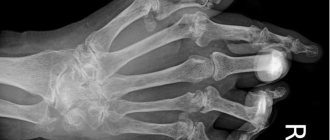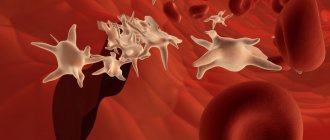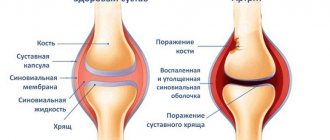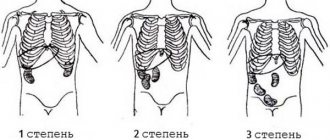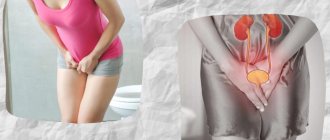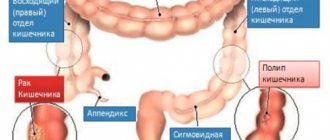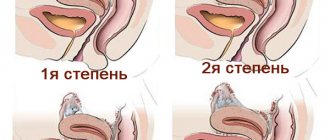Osteoporosis is a skeletal pathology, the course of which is accompanied by changes in bone structure. Frequent diagnosis of the disease is due to the absence of any clinical manifestations in the initial stages of development. Therefore, it is detected when fractures have already occurred. When choosing treatment tactics for osteoporosis, the doctor takes into account the severity of symptoms, the degree of destruction of bone tissue, and the cause of its occurrence.
What is osteoporosis
Osteoporosis is a systemic disease caused by the predominance of destructive processes over restorative ones. As a result of an imbalance in biochemical reactions, bone tissue loses the ability to retain calcium, so it is quickly eliminated from the body. Bone fragility increases, which causes frequent spontaneous fractures. They are caused by awkward movements, minor bruises, falls, and minor mechanical impacts.
Classification
The classification is based on the factors that caused the development of the disease. This division into main types is also due to the emerging deficiency of microelements, biologically active substances necessary for rapid and complete regeneration of bone tissue. The belonging of a disease to one of the groups is a criterion that determines treatment tactics.
Primary
The most commonly diagnosed type of primary osteoporosis is postmenopausal, which develops during natural menopause. Senile pathology is detected in elderly patients and the elderly. In this case, the prerequisites for increased bone fragility are a slowdown in regeneration processes and a decrease in the body’s production of substances for building bone structures.
Primary osteoporosis also includes juvenile osteoporosis, which affects children and adolescents. One of the possible reasons for their development is a deficiency of calcium and vitamin D. Idiopathic pathology is found mainly in men 20-50 years old, and the difficulties of its treatment lie in the as yet unknown cause of bone resorption (decreased density).
Secondary
This group includes osteoporosis that developed against the background of other diseases. Most often, increased bone fragility is observed with the progression of rheumatological pathologies, for example, rheumatoid arthritis.
It can be provoked by an endocrine imbalance, characteristic of a decrease in the functional activity of the endocrine glands, especially the adrenal glands and the thyroid gland.
Malignant and benign neoplasms absorb a lot of calcium, discharging bone structures. The cause of secondary osteoporosis is also long-term course use of heparin, hormonal agents, and anticonvulsants.
Stages of development
The effectiveness of treatment depends on the severity of the disease, which is detected during radiographic diagnostics - densitometry. It is aimed at determining bone mineral density and allows assessing the risk of disease progression.
| Severity of osteoporosis | Characteristic radiological signs |
| First | Signs of thinning of bone tissue are absent or weakly expressed; the doctor can only suspect the onset of osteoporosis by the reduction of bone beams |
| Second | The resulting images show a noticeable increase in the transparency of bone structures, indicating a decrease in their density. Coarse striation of the trabecular bone tissue is noted |
| Third | Bone density decreases significantly, the vertebrae become biconcave, one vertebra undergoes severe deformation |
| Fourth | The vertebrae in external outline resemble those of a fish; wedge-shaped deformation of several vertebrae and increased transparency of the bone structures are detected |
Causes of pathology
The development of osteoporosis can be provoked by pathological conditions in which there is inadequate absorption (absorption) of microelements, fat- and water-soluble vitamins. A sedentary lifestyle and low physical activity lead to deterioration of blood supply to tissues and metabolic disorders. Causes of increased bone fragility also include:
- hormonal imbalance, increase or decrease in the production of bioactive substances involved in metabolic processes or regulating them;
- severe pathologies of the kidneys, gastrointestinal tract, cardiovascular system;
- hematopoietic disorders;
- drinking large amounts of carbonated drinks, which accelerate the removal of calcium from the body;
- rheumatic pathologies.
The likelihood of bone demineralization increases with prolonged immobilization after fractures, damage to the ligamentous-tendon apparatus, and with relapses of deforming osteoarthritis. Such conditions lead to the activation of osteoclasts, which soften bone tissue.
In men
The risk of developing pathology is increased in men with insufficient testosterone levels. This decrease in hormone production is called hypogonadism - testicular failure, clinically manifested by an excessively high-pitched voice, lack of hair on the face and body. Bones also become fragile in prostate cancer due to a lack of calcium and the use of drugs for treatment that disrupt the metabolism of this microelement, causing its rapid elimination from the body.
Osteoporosis can be provoked by alcohol abuse and smoking. Ethyl alcohol, nicotine, and tobacco tar worsen the condition of blood vessels and the blood supply to tissues with nutrients.
Among women
In some cases, bone restoration slows down with prolonged breastfeeding, multiple pregnancies, or a large number of births. In women who have entered menopause, the likelihood of developing osteoporosis is very high. After the onset of natural menopause, the production of estrogen decreases, and it is these sex hormones that are responsible for bone regeneration. The following conditions become prerequisites for increased skeletal fragility:
- various menstrual cycle disorders;
- infertility;
- the onset of menstruation only after 15 years;
- early onset of menopause (before 50 years).
Provoking factors also include insufficient intake of calcium from food. And this often happens to women who follow one-component diets.
Prevention
The cause of osteoporosis is a lack of vitamins and microelements due to the fact that they are absorbed in small quantities and are not retained in the body (after all, the hormone responsible for this process has become smaller), so you should monitor how much nutrients you receive with food or medications.
Calcium standards
You should consume 1000 mg per day up to the age of 55-65, as well as 1500 mg after menopause for women and men over 65. Where it is found:
| 100 grams of product | How many mg of calcium |
| Milk | Milk |
| Kefir, cottage cheese, yogurt | 120 – 125 |
| Cheese | 650 – 880 |
| Sour cream | 84 |
| Egg | 55 |
Vitamin D standards
You should consume 400-800 IU every day. It can be obtained after 10-15 minutes of sunbathing, and in autumn and winter - with food:
| Product | Vitamin D content, IU per 100 g |
| Herring | From 300 to 1600 |
| Salmon | From 200 to 800 |
| Mushrooms | Up to 125 |
| Egg yolks | From 45 to 390 |
| Liver | Liver |
Symptoms of the disease
Osteoporosis in most cases develops slowly, so it does not appear clinically for a long time. Occasionally, discomfort localized in the thoracic or lumbosacral spine occurs. The patient's height gradually decreases, and stiffness is often felt when bending or turning the body. Posture (stoop) changes, and over time, gait. The following symptoms are also characteristic of osteoporosis:
- fatigue even when doing normal housework;
- during sleep, convulsive muscle contractions of the legs;
- aching pain in the joints and spinal column due to hypothermia, minor physical exertion, or sudden changes in weather.
The most pronounced symptoms of the disease that occur at the stage of severe loss of bone tissue are fractures. Typically the vertebral bodies or radius are damaged. But the most dangerous is a fracture of the femoral neck, which is difficult to treat in elderly patients and the elderly.
Complications
The main and especially dangerous consequence of thinning bones in women is fractures - of the femoral neck, vertebrae, collarbone or forearm. It is the violation of the integrity of the femur that has brought osteoporosis to fourth place in the world in mortality among elderly women.
We must not forget about the immobility that follows a fracture. And this is the formation of bedsores, thrombosis, secondary infections and congestion in the lungs. Only timely surgery can make life easier for such patients.
But unfortunately, surgical treatment cannot always be performed in women with osteoporosis and hip fracture due to advanced age. And the degradation of the bones of the spine is generally not amenable to surgical intervention. Therefore, the only sure way to combat osteoporosis among older women is to prevent the disease and early diagnosis.
Which doctor treats osteoporosis
Often patients come to the traumatologist with fractures. Before treatment, they are shown an X-ray examination, the results of which reveal the disease. Subsequent diagnostics make it possible to detect the cause of its development. If osteoporosis is caused by a decrease or increase in hormone levels, the patient is sent to an endocrinologist for further treatment. A rheumatologist will treat rheumatic pathologies, and an orthopedist will treat deforming arthrosis.
Sometimes a person realizes that his health is not all right in the initial stages of the disease. In this case, it is advisable to consult a therapist. After studying the diagnostic results, he will refer the patient to a specialist doctor.
Diagnostics
The most well-known and frequently used method for diagnosing osteoporosis is radiography. But it is informative only when 1/3 of bone mass is lost. At this stage, treatment is no longer effective. Long-term use of pharmacological drugs of various groups that negatively affect internal organs is required. Recently, more modern diagnostic methods have been used to detect pathology in the early stages.
Instrumental research methods
Computer tomographs equipped with special attachments can detect bone resorption in the initial stages. But to recreate a complete picture of the changes that have occurred, it is necessary to examine several areas of the patient’s body. This takes a lot of time and is not cheap, so doctors prefer to use single-photon, two-photon, and ultrasound densitometry.
Highly sensitive methods are based on measuring the level of calcium in bone tissue, helping to assess their density, strength, and the likelihood of potential fractures.
Laboratory research
Clinical blood and urine tests are performed to assess the patient's general health. Additional laboratory tests are also indicated to determine the content of calcium, phosphorus, and ergocalciferol. The level of electrolytes is detected in the urine, and osteocalcin, which is formed in osteoblasts, is detected in the blood. The excretory functions of the kidneys are assessed to provide a complete picture of the disease and determine the optimal treatment tactics.
How to treat osteoporosis
Therapy consists of slowing its progression as much as possible, improving the patient’s well-being, and reducing the risk of spontaneous fractures. Treatment uses drugs from various clinical and pharmacological groups to eliminate the cause of osteoporosis and increase bone strength.
For serious injuries to the hip or knee joints, patients are immediately offered surgery. Only the installation of endoprostheses helps improve the quality of life and prolong it.
Drug treatment
The therapeutic regimens for patients include single-drug calcium and combination drugs with vitamin D. Balanced complexes of water- and fat-soluble vitamins and microelements (Nutrimax, Complivit, Caltsinova) are also prescribed to prevent the progression of the disease.
The first choice drugs are usually bisphosphonates (Bonviva, Actonel), which reduce bone resorption. Calcitonin is also used in therapy, slowing down bone loss, helping to increase the content of phosphorus, calcium, and other essential microelements. This drug has analgesic properties and accelerates tissue healing in fractures.
Hormone replacement therapy
This type of therapy is used not only after osteoporosis is diagnosed, but also when conditions that are prerequisites for its development are detected. During menopause, women are prescribed estrogen receptor modulators - Keoxifene, Droloxifene, Raloxifene, Evista. It is noted that the course use of these drugs reduces the likelihood of fractures by 50% by slowing down bone loss.
To correct hormonal levels, drugs with estrogen (Femoston, Kliogest) are used. When choosing medications, the doctor takes into account the patient’s age, degree of resorption, and the risk of systemic side effects.
Physiotherapy
Immediately after the diagnosis is made and therapeutic tactics are determined, patients are referred to a physical therapy doctor. He studies the examination results and, taking into account the degree of bone resorption, physical fitness, and age, creates a set of exercises. Regular training helps strengthen the muscular framework of the joints and spine. This allows you to minimize the risk of fractures and improve your overall health.
Diet
When dieting, the patient’s daily menu should contain foods high in calcium. There is a lot of this microelement in cheeses, cottage cheese, fermented baked milk, seaweed, spinach, beans, and eggplants. Particularly useful is fatty sea fish, which serves as a source of not only calcium, but also polyunsaturated fatty acids. Bioactive substances cleanse blood vessels of cholesterol and improve blood supply to bone structures.
In the absence of contraindications, nutritionists recommend eating soy and products made from it. Her beans contain a lot of magnesium, phosphorus, potassium and calcium.
Folk remedies and recipes
Products made according to traditional medicine recipes do not have a pronounced therapeutic effect, therefore they are used only after the main treatment for preventive purposes. The most famous way to replenish calcium reserves is to eat crushed eggshells with the addition of an equal volume of lemon juice. It is recommended to take a quarter teaspoon of the mixture daily for one month.
Features of treatment
For this disease, only long-term complex treatment is effective.
- First of all, hormonal treatment is prescribed. It is extremely important to restore normal hormonal levels, the balance of all hormones.
- Calcium supplements must be prescribed.
- Vitamin D will ensure better calcium absorption.
- Special medications slow down the process of bone destruction.
- Proper nutrition is of great importance, as is physical therapy.
Several specialists provide therapy at the same time.
